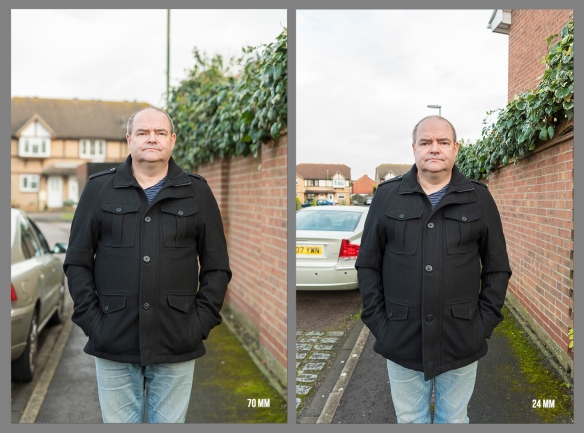For this exercise, I have taken a photo where the subject is in front of a background with depth.
The first shot was taken at a focal length of 70 mm and the second shot at 24 mm. In order to keep the subject at a similar size in the frame, I had to move forward to take the second shot.

When putting the images side by side it is really easy to see how the combination of focal length and viewpoint is affected by ‘perspective distortion’.
Perspective distortion is a normal effect of viewing an object. It is thought that the human eye is similar to a 50 mm (full frame) lens, which is about half way between this two images. Therefore, if you wanted to take an image that best represented how it is seen then use a 50 mm lens. Our eyes would however, see a much wider field as our field of vision is probably closer to the 24 mm lens, as shown in excercise 2.1
Other things I have noted in these two images, are that although both were taken at an aperture of f/4, the 2nd (24mm) photo, has much more of the foreground is in focus and secondly, the background is much further away and sharper.
For a portrait like this, I think I would prefer the 70 mm version, as the subject stands out more in the image, and I also prefer the angle. (notwithstanding the fact that he doesn’t have a street light coming out of his head!!). There seems to be more definition between him and the background. However, the 24 mm focal length would be better for Landscapes where keeping things in focus throughout the image is more desirable.
I wonder if the fact that I am only 5 ft 2″ has an impact on this, as in having to get closer to keep the subject in the centre of the image, I ended up looking up a bit? If had been taller would this be an issue?
